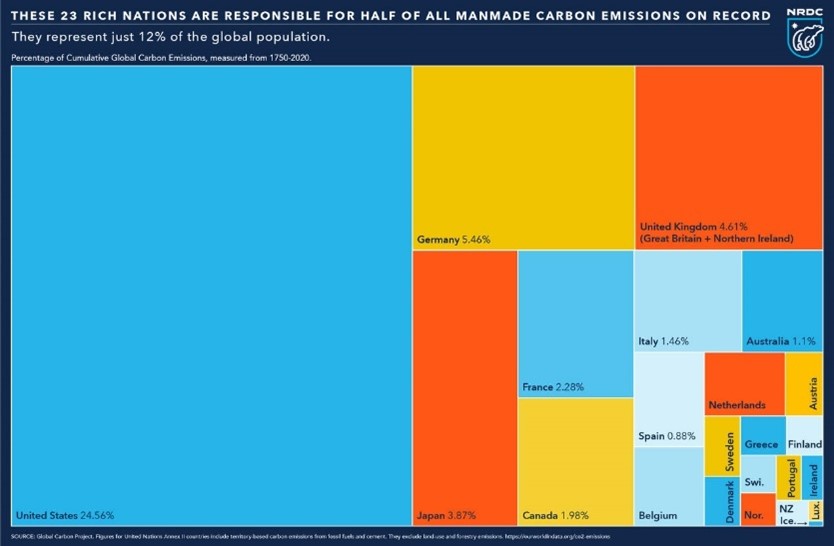The Philippines’ high vulnerability to disasters is well-known. Estimates show that more than half of its land area – 60%, and around three-quarters of its population are exposed to multiple hazards such as cyclones, floods, landslides, earthquakes, tsunamis, and droughts.
The World Bank data between 1980 and 2020 shows that among the natural hazards that occur in the country, storms (46.94%) account for the highest and most frequent risk, followed by flooding (23.13%), miscellaneous accidents (12.07%), landslide (4.93%), earthquake (4.76%), volcanic activity (3.23%).
Since 1990 the country has been hit by 565 disasters, leading to 70,000 deaths and $23 billion in damages. Its location in the Northwestern Pacific Basin means the country is in the path of tropical cyclones. Every year an average of 20 storms enter its area of responsibility, with 8 making landfall. The most severe cyclone so far was Typhoon Haiyan in 2013, which killed 6,000 people, wiped out nine regions, and cost the country $803 million in loss and damages.
The Philippines also belongs to the list of developing countries identified as the most climate-vulnerable and with low-adaptive capacity – countries that need assistance from developed countries to fight climate change through climate mitigation and climate adaptation strategies and investments.
Developed and wealthier countries are responsible for climate change because they have been the biggest GHG emitters for over a century. Because of their high adaptive capacity and sufficient resources, they won’t suffer like the poor and developing countries with the impacts of climate change. As such, they are morally obligated to shoulder the bulk of climate adaptation and mitigation costs in less and least-developed countries.
The Fund was established within the UNFCCC framework as an operating entity of the Financial Mechanism to assist developing countries in adaptation and mitigation practices to address climate change.
The GCF Board is entrusted with developing rules and procedures for disbursing the funds and ensuring that these are consistent with the national objectives of the countries where the projects and projects will be taking place.
When it comes to the planet’s biggest emitters historically, the Natural Resources Defense Council (NRDC) puts together the data on global carbon emissions from 1750 to 2020. It revealed that only 23 developed countries are responsible for half of all historical CO2 emissions, with the United States and the Western European nations emitting the lion’s share of GHG emissions.
The image below shows the world’s historically biggest GHG emitters:

Climate advocates like the NRDC and the UNFCCC have been calling for developed countries to make good on their pledge of $100 billion every year to help developing countries reduce their emissions and adapt to the impacts of climate change. In 2013 donor countries started raising commitments to meet the $100 billion by 2020 but only managed to mobilize around $80 billion by 2019 from public and private climate funding. There are signs that donor countries would have to scale back their pledges due to the pandemic.
In Manila, the Land Bank of the Philippines, a government-owned bank, has expressed its continued commitment to helping the country fight the climate change crisis during the Disaster and Climate Emergency Policy Forum on 22 September 2022. The Bank “assures local development stakeholders of continued access to climate finance under the Green Climate Fund (GCF), in support of projects for climate change adaptation and mitigation.”
According to the Land Bank’s announcement:
- “As a Direct Access Entity (DAE) of the GCF, LANDBANK channels grants and loans provided by the GCF to finance local projects that aim to mitigate and adapt to climate change. The Bank leads the project development, management, monitoring and evaluation, in partnership with public and private entities.”
- “In April of this year, LANDBANK and the Philippine Atmospheric, Geophysical and Astronomical Services Administration (PAG-ASA) under the Department of Science and Technology (DOST) started the implementation of the very first GCF-approved project in the country.”
- “The GCF project titled “The Multi-Hazard Impact-Based Forecasting and Early Warning System” aims to shift from a traditional hazard-based to an impact-based forecasting and early warning system, to help the public take pre-emptive measures and improve disaster risk reduction in the long run.”
- “The project will benefit communities in the disaster-prone areas of Palo, Leyte; New Bataan, Davao de Oro; Tuguegarao City, Cagayan; and Legazpi City, Albay.”
The Bank is also proposing the approval of eight other GCF projects to build climate change adaptation and mitigation in the following sectors – agriculture, health, transportation, renewable energy and energy efficiency, water resource management and ecosystem management.
The GCF’s website shows five current projects in the Philippines with total funding of 89.6 million.
Sources:
The Philippines. (2021). World Bank Group. Retrieved from https://climateknowledgeportal.worldbank.org/country/philippines/vulnerability
Green Climate Fund. Retrieved from https://www.greenclimate.fund/
Lindwall, C. (2022, 21 January). Rich, Polluting Nations Still Owe the Developing World. NRDC. Retrieved from https://www.nrdc.org/stories/rich-polluting-nations-still-owe-developing-world
LANDBANK assures available climate finance for adaptation, mitigation. (2022, 3 October). PIA. Retrieved from https://pia.gov.ph/press-releases/2022/10/03/landbank-assures-available-climate-finance-for-adaptation-mitigation



Leave a Reply